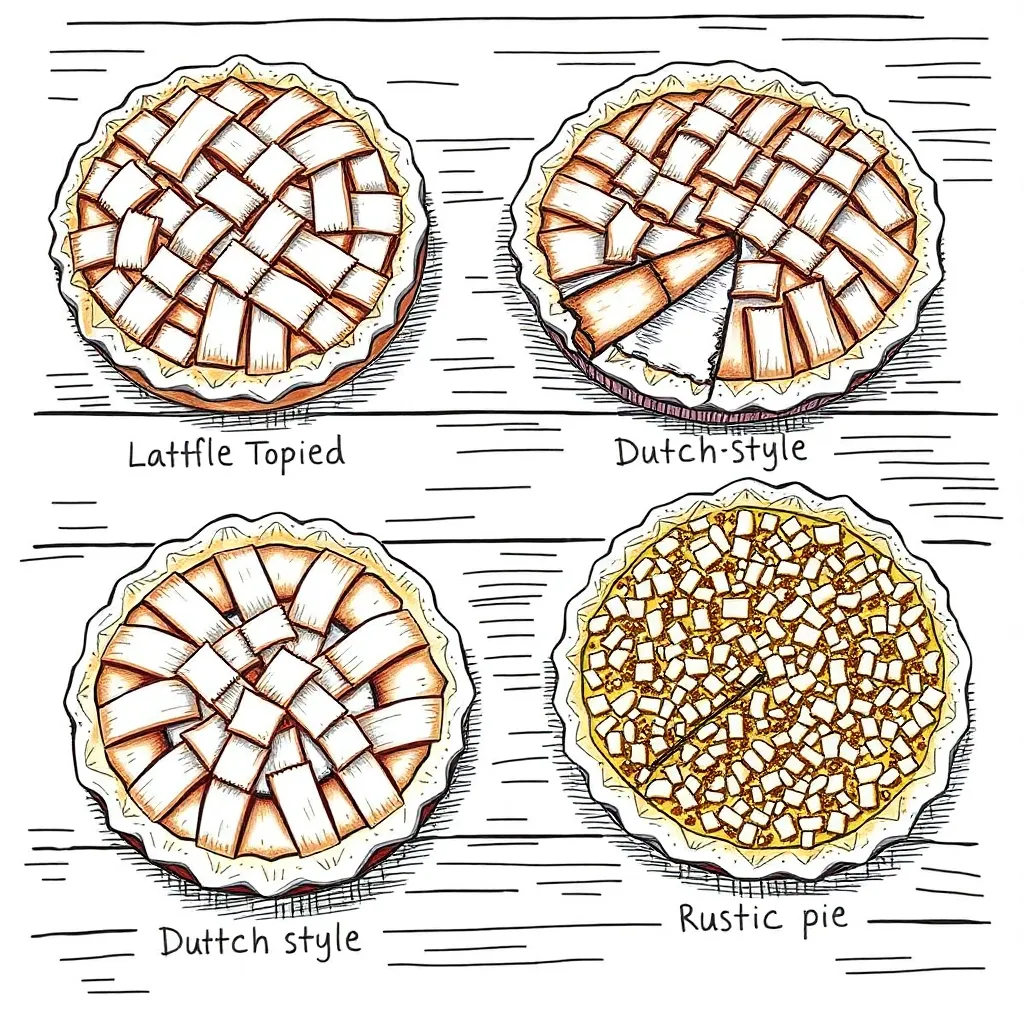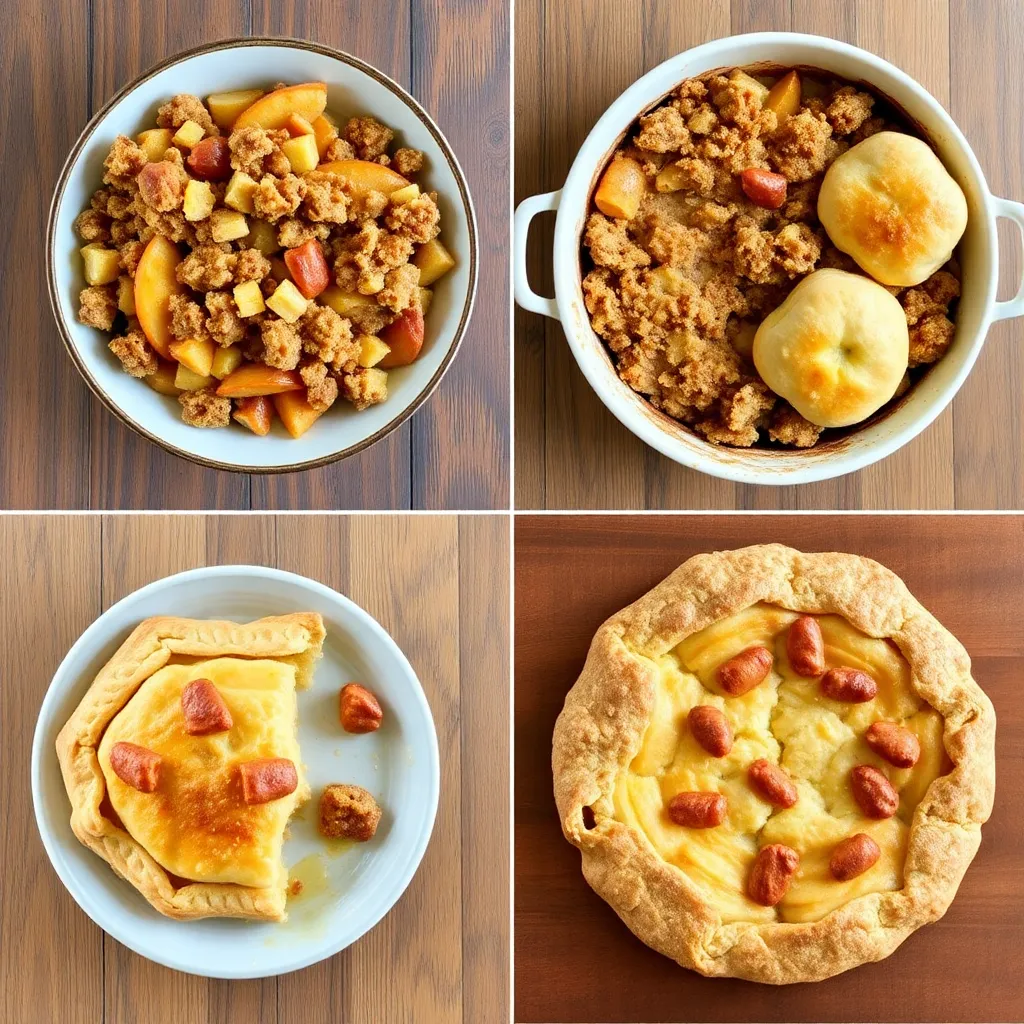· recipes · 3 min read
Classic Apple Strudel and Other European Apple Pastries
Journey through Europe's most beloved apple pastries, starting with the iconic Viennese apple strudel. Learn the secrets to creating paper-thin dough, perfectly spiced fillings, and master the techniques behind classic European apple desserts.

Recipe Overview
European apple pastries represent centuries of baking tradition, with each region contributing its unique take on transforming apples into delicate, flaky desserts. At the heart of this tradition lies the Viennese apple strudel (Apfelstrudel), renowned for its paper-thin pastry wrapped around a spiced apple filling. Alongside this masterpiece, we’ll explore other European classics like French tarte tatin, Danish aeblekage, and German apfelkuchen.
These pastries showcase different techniques and traditions: from the delicate stretching of strudel dough to the careful caramelization of tarte tatin apples. Each recipe carries its own story and requires specific techniques that, once mastered, open up a world of traditional European baking.
Classic Viennese Apple Strudel (Apfelstrudel)
For the Strudel Dough
- 2½ cups all-purpose flour: sifted
- ½ teaspoon salt
- 1 large egg
- 1 tablespoon vegetable oil
- ½ cup lukewarm water
- Additional flour for dusting
- Melted butter for brushing
For the Apple Filling
- 6 large baking apples: peeled and thinly sliced
- ¾ cup raisins: soaked in rum (optional)
- 1 cup breadcrumbs: toasted in butter
- ¾ cup granulated sugar
- 1 teaspoon ground cinnamon
- ¼ teaspoon ground nutmeg
- Zest of 1 lemon
- ½ cup butter: melted
- Powdered sugar for dusting
Strudel Instructions
Make the Dough
- Mix flour and salt in a bowl
- Add egg, oil, and water gradually
- Knead until smooth and elastic (15-20 minutes)
- Rest dough for 30 minutes under warm bowl
Prepare the Filling
- Mix sliced apples with sugar and spices
- Toast breadcrumbs in butter until golden
- Drain soaked raisins if using
Stretch the Dough
- Cover large table with clean cloth
- Dust with flour
- Roll dough into rectangle
- Gently stretch using back of hands
- Pull until paper-thin
Assemble and Bake
- Brush dough with melted butter
- Sprinkle with breadcrumbs
- Add apple filling along one end
- Roll using cloth to assist
- Place on baking sheet
- Brush with butter
- Bake at 375°F for 30-35 minutes
French Tarte Tatin
Ingredients
- 6 firm apples: peeled and halved
- 1 cup sugar
- 6 tablespoons butter
- 1 sheet puff pastry
- Pinch of salt
Instructions
- Melt sugar in cast iron skillet until caramel
- Add butter and apples
- Cook until caramelized
- Cover with pastry
- Bake at 425°F for 20-25 minutes
- Invert while warm
Danish Apple Cake (Aeblekage)
Ingredients
- 4 apples: peeled and sliced
- 2 cups breadcrumbs
- ½ cup butter
- ½ cup sugar
- 1 cup whipped cream
- ¼ cup apple jam
- ¼ cup chopped hazelnuts
Instructions
- Cook apples with sugar until soft
- Toast breadcrumbs in butter
- Layer ingredients in glass bowl
- Top with whipped cream
- Chill before serving
Pro Tips
- Keep strudel dough warm while working
- Use correct apple varieties for each recipe
- Practice stretching dough with smaller portions
- Maintain proper temperature for caramel
- Cool pastries appropriately before serving
Common Challenges
Strudel Dough Tearing
- Rest dough properly
- Keep warm while working
- Use gentle stretching motion
- Patch small holes immediately
Tarte Tatin Caramel Issues
- Watch sugar carefully
- Use correct heat level
- Choose proper apples
- Time turning carefully
Texture Problems
- Follow resting times
- Maintain proper temperatures
- Use correct flour type
- Handle dough gently
Regional Variations
German Apfelkuchen
- Yeasted cake base
- Sliced apples arranged in pattern
- Glazed with apricot jam
Austrian Apfelringe
- Apple ring fritters
- Beer batter coating
- Dusted with cinnamon sugar
Swiss Apfelwähe
- Open-faced apple tart
- Custard filling
- Lattice top optional
Serving Suggestions
- Serve strudel warm with vanilla sauce
- Add whipped cream to tarte tatin
- Pair with coffee or tea
- Garnish with fresh berries
- Add vanilla ice cream
Storage Tips
- Strudel: Best day of baking
- Tarte Tatin: Serve same day
- Aeblekage: Refrigerate up to 2 days
- Freeze unbaked strudel up to 1 month
- Reheat gently before serving
Cultural Notes
These pastries are deeply embedded in European culinary traditions. The Viennese apple strudel was once so important that mastering it was required for marriage in certain regions. Tarte Tatin was allegedly created by accident at Hotel Tatin in France, while Danish aeblekage represents the Scandinavian love for layered desserts.
Advanced Techniques
Strudel Dough Test
- Should stretch paper-thin
- Hold printed paper readable through it
- No tears or holes
- Even thickness throughout
Caramel Stages
- Light amber for tarte tatin
- Watch carefully to prevent burning
- Use heavy-bottomed pan
- Allow proper cooling time
Remember, these traditional pastries require patience and practice. Each attempt will improve your technique, bringing you closer to mastering these beloved European classics.
Happy baking!


